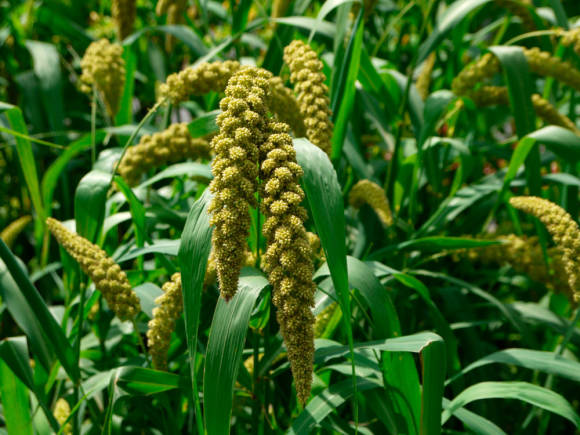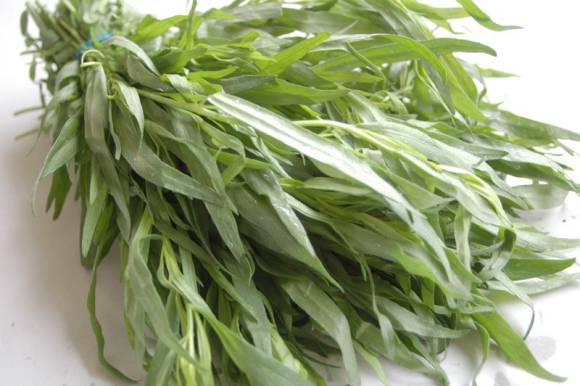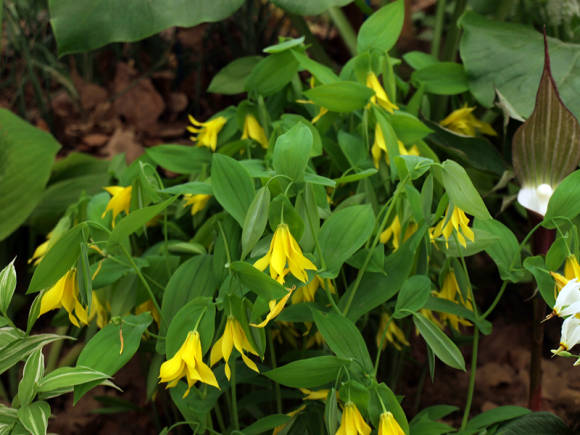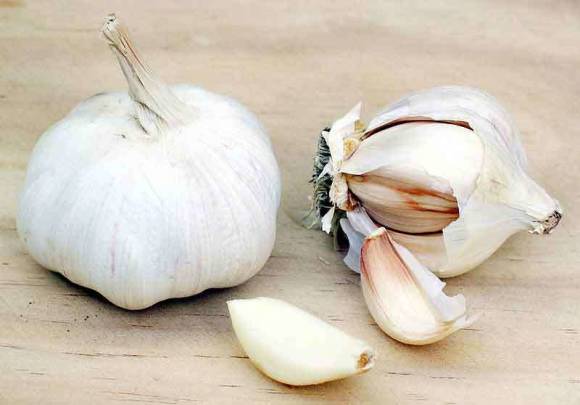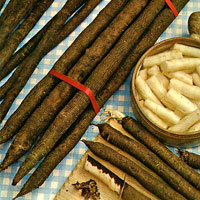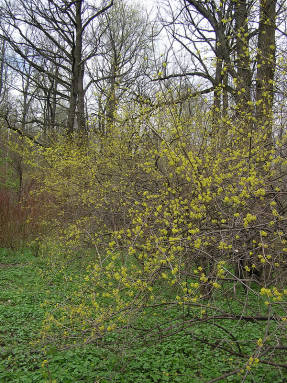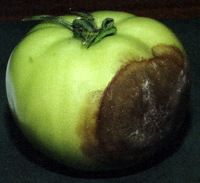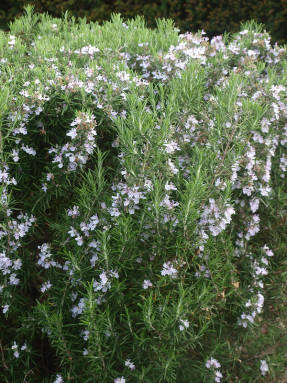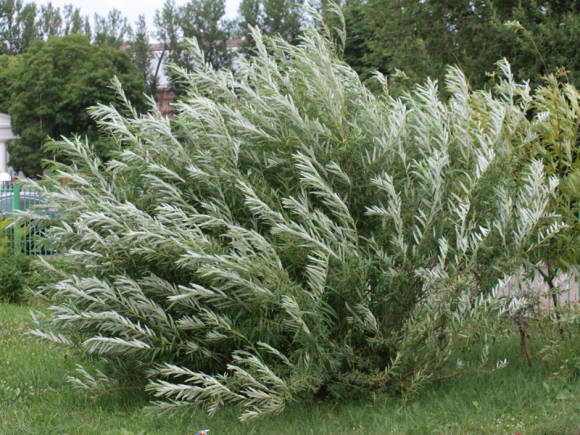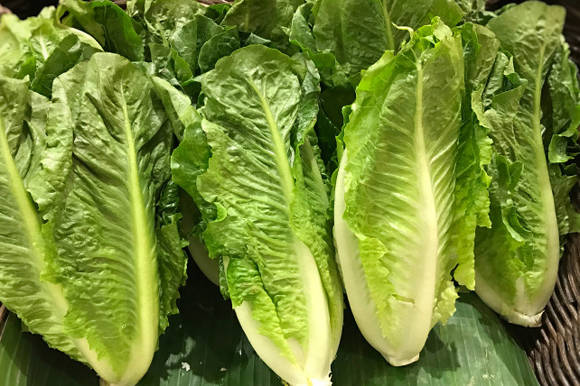
Roman salad, or Romaine lettuce - variety of sowing lettuce (Lactuca sativa var. longifolia).
There is no reliable information about the homeland of this salad, although it is believed that it is from the island of Kos from the Greek archipelago. Therefore, it is no coincidence that in England it is called "kos-salad".
In terms of biological characteristics, it is very similar to the head lettuce, but differs from it in the shape of the leaves and the head. Its leaves are from light green to dark, grayish-green, erect, harsh, up to 30 cm long and up to 12 cm wide, fleshy, crispy, juicy, directed vertically upward.
The leaves form large, loose heads of elongated-oval shape, sometimes two heads of cabbage in one rosette. Moreover, the plant itself rather weakly curls the head, this is done artificially, tying the leaves above the center of the plant. Heads of cabbage have an exceptionally high taste and are in great demand in the USA and Western Europe.
According to its properties, romaine is similar to late-ripening varieties of head lettuce, but differs from them in unpretentiousness, resistance to shooting, and a longer shelf life.
Roman salad is cold-resistant, well-seasoned seedlings can withstand temperatures as low as -3 ° C. But during the period of head formation, even the lightest frosts negatively affect the further growth of plants.
Roman lettuce is very picky about high light levels, although it can adapt to very little shade. Shaded areas will not work for it. with a lack of light, the heads of cabbage are small and very loose.
Like all head salads, Roman salad is picky about high soil moisture, but does not tolerate waterlogging, prolonged rains lead to decay of plants. At the same time, the lack of moisture in the soil negatively affects the size and density of the head of cabbage and can cause premature stemming of plants. At the same time, the leaves are very bitter and not suitable for everyone's taste.

Romaine lettuce varieties
The varietal composition of Roman lettuce in our gardens and orchards is extremely poor, although in recent years it has been significantly enriched:
- Balloon - a late variety of Roman lettuce with a growing season of 80–100 days. The rosette of leaves is very high (up to 100 cm), up to 40 cm in diameter, the leaves are light green. Heads of cabbage are elongated-oval, loose, up to 25 cm high and up to 10–12 cm in diameter, weighing up to 300–350 g.
- Vyacheslav - a new mid-season variety of Roman lettuce with smooth leaves. Heads of cabbage are open, elongated-oval, weighing up to 350 g.
- Dandy - mid-season variety of Roman lettuce with large, slightly bubbly leaves. Heads of cabbage are large, loose, weighing up to 300 g, stored for a long time.
- Roman lettuce - mid-season variety of Roman salad. Heads of cabbage are elongated-oval, up to 25 cm high and up to 15 cm in diameter.The weight of one head of cabbage is up to 300 g.
- Paris Green - a mid-late variety of Roman salad. The growing season is 85–90 days. The rosette of leaves is large, very high, the leaves are yellow-green, large, 20-22 cm long, delicate in taste. Heads of cabbage are elongated-oval, medium density, large. The variety is cold-resistant and heat-resistant at the same time.
- Remus - a late-ripening variety of Roman lettuce with dense, bubbly leaves. Closed heads of cabbage, loose, weighing up to 350 g.
- Stanislav - mid-season variety of Roman salad with smooth reddish leaves. Heads of cabbage weighing up to 300 g.
- Sukraine - an early variety of Roman salad. It takes only 60 days from germination to ripening. The heads are small, green, compact, rather hard. Recommended for growing in cool, dry locations.
 |  |  |
Growing romaine lettuce
Growing Roman lettuce is very similar to growing head lettuce.
It is better to plant Roman salad in warm sunny places near the southern wall of the house, barn, fence. It is best suited for areas with humus-rich soil. It grows well after vegetables, under which manure was applied.Loamy soils and cultivated peatlands are suitable for its cultivation. He does not need fresh organic matter, it is better to grow it in the second year after applying manure to the soil.
For its cultivation, heavy loamy and clayey soils, prone to crust formation, are undesirable. Roman salad does not grow on sour, wheatgrass and sow-thistle soils.
Roman salad is often grown after early cabbage and cauliflower, cucumbers, zucchini. The best salad precursors are onions, leeks, and bush beans.
The soil for growing Roman lettuce is prepared in the fall. Immediately after harvesting the predecessor, it is loosened to accelerate the germination of weed seeds, then they are dug up onto a full bayonet of a shovel. Before digging, make 1 sq. m 1 bucket of rotted manure or compost, 1 tbsp. a spoonful of superphosphate, potassium salt and lime-fluff.
If the soil is very heavy, in addition, 0.5 buckets of coarse-grained river sand and peat are added, and on light sandy ones - 0.5 buckets of clay, which must first be dried and ground into a fine dry powder - the finer the better.
The introduction of large lumps of clay into the sandy soil does not give any effect at all. For some reason, most gardeners and truck farmers constantly forget about this.
In the spring, the soil is dug to a depth of 12-15 cm, making 1 sq. meter 1 teaspoon of ammonium nitrate. Then the soil is well leveled with a rake, breaking up lumps of earth, and beds are formed.
Roman salad is most often grown through seedlings, since this technique allows you to get full-fledged heads of cabbage.

Growing seedlings
Seeds are sown in rows every 15 cm, spreading them every 2 cm to a centimeter depth, then the soil is slightly compacted. After the emergence of seedlings, the seedlings are thinned out every 6–8 cm. Many gardeners dive into 6x6 or 8x8 cm peat pots to reduce root damage during transplantation.
When picking, the seedlings are chosen very carefully, they are taken only by the cotyledons so as not to damage the stalk. After picking, the seedlings must be shaded for 2-3 days, protecting them from direct sunlight. At the same time, the first weeding is carried out.

25 days after sowing the seeds, the seedlings are usually ready to be planted in their permanent location. By this time, the plants have 4–5 true leaves. When transplanting, the seedlings must be removed from the ground very carefully so as not to damage the delicate roots. The day before transplanting, lettuce seedlings should be watered abundantly.
Seedlings are planted in rows in staggered rows at the same time as cabbage, making temporary film shelters. The distance between plants in a row should be gradually increased to 20–25 cm, and between rows - to 30–35 cm, using the torn plants for food. Timely thinning of Roman lettuce is one of the most important conditions for a good harvest.
When planting seedlings, it is necessary to ensure that the root collar is located at the level of the soil, otherwise the plants can rot.

Roman salad care consists in weeding, loosening the soil, thinning crops and watering. After watering, it is imperative to loosen the soil, since plants quickly react to the appearance of a soil crust, which limits the access of oxygen to the roots. The formation of this crust, combined with dry soil and lack of nutrients, causes the plants to shoot rapidly.
"Ural gardener", No. 11, 2019
